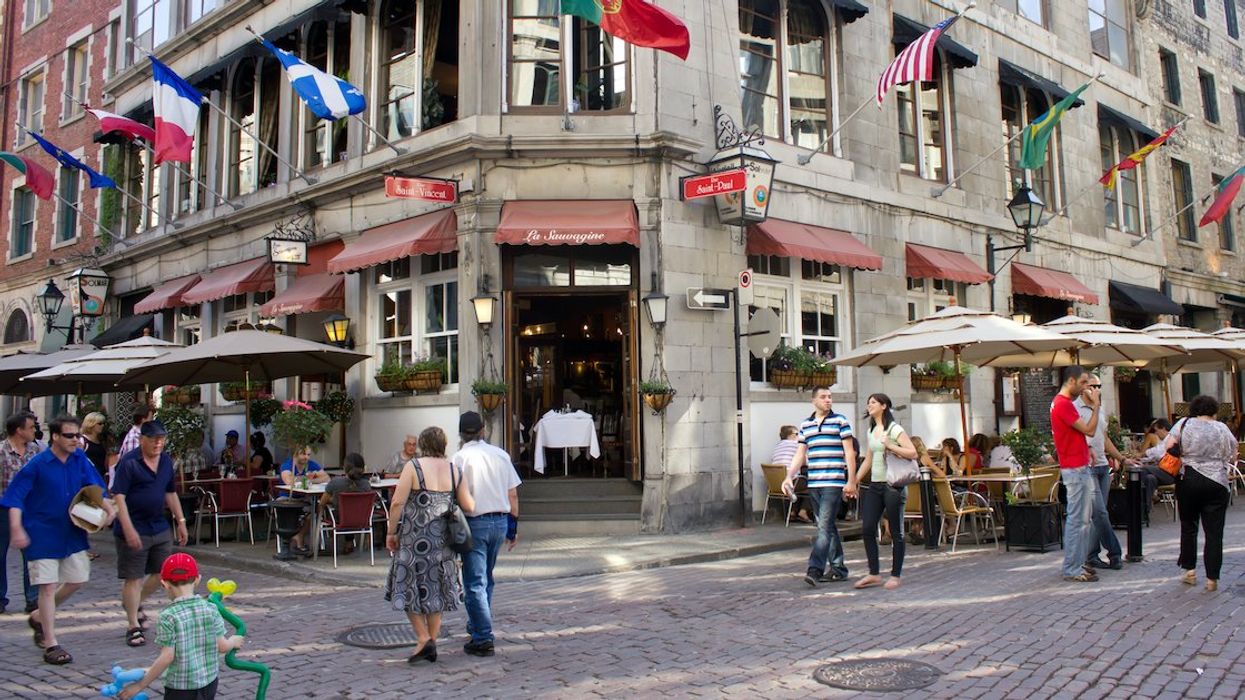Old Montreal Is Going To Become A European-Style Pedestrian-Supreme Zone
"Old Montreal will become a historic neighbourhood where the pedestrian is king."

Pedestrians walk on rue Saint-Paul in Old Montreal.
Old Montreal is going to become more pedestrian-friendly in the coming years, beginning with the pedestrianization of a big chunk of the neighbourhood.
The city announced the plan as part of its goal to achieve carbon neutrality in transportation by 2040.
"Old Montreal will become a historic neighbourhood where the pedestrian is king," the city declares in a press release, mentioning similar initiatives in the old cores of other world cities.
The city's full transportation decarbonization plan does not make clear to what extent Old Montreal will restrict vehicle access, just that officials aim to "improve the experience and safety of pedestrians" and "reinforce its appeal to tourists."
So it's likely the neighbourhood won't close off entirely to cars. Some alternatives could include partial pedestrianization, widening pedestrian zones or giving pedestrians supreme right of way.
The city does plan to pedestrianize at least part of the neighbourhood. Initial plans call for the creation of a multi-block pedestrian section in 2024, though its exact location has yet to be announced. Officials are committing to work with residents, businesses and restaurant owners in the implementation of the plan.
The other two big steps in Montreal's transportation decarbonization plan are the creation of a "sustainable mobility corridor," including bus rapid transit (BRT) lanes and a Réseau express vélo bike highway extension on boulevard Henri-Bourassa and a program to improve and decarbonize cargo transportation.
"Montrealers are ready to do what is necessary and expect us to take strong and courageous actions to build a city that is resilient to climate change," Mayor Valérie Plante states in the release.
"Knowing that more than 40% of greenhouse gas emissions on Montreal Island come from transportation, we must take consistent action to achieve the ambitious goals we have set and make our living environments safer and more user-friendly. This obviously implies changing our daily commuting habits, and the roadmap we are unveiling today shows us the way to get there."
- The Montreal Old Port's Grand PoutineFest Is Back This Year With A New Beer Zone - MTL Blog ›
- Montreal Mayor Valérie Plante Shared Her Sud-Ouest Date Night Itinerary - MTL Blog ›
- Montreal Summer Would Be Ruined If This Quebec Weather Forecast For July Actually Pans Out - MTL Blog ›
- I Visited Montreal's New Museum Of Illusions & These Are The Coolest Parts (PHOTOS) - MTL Blog ›

